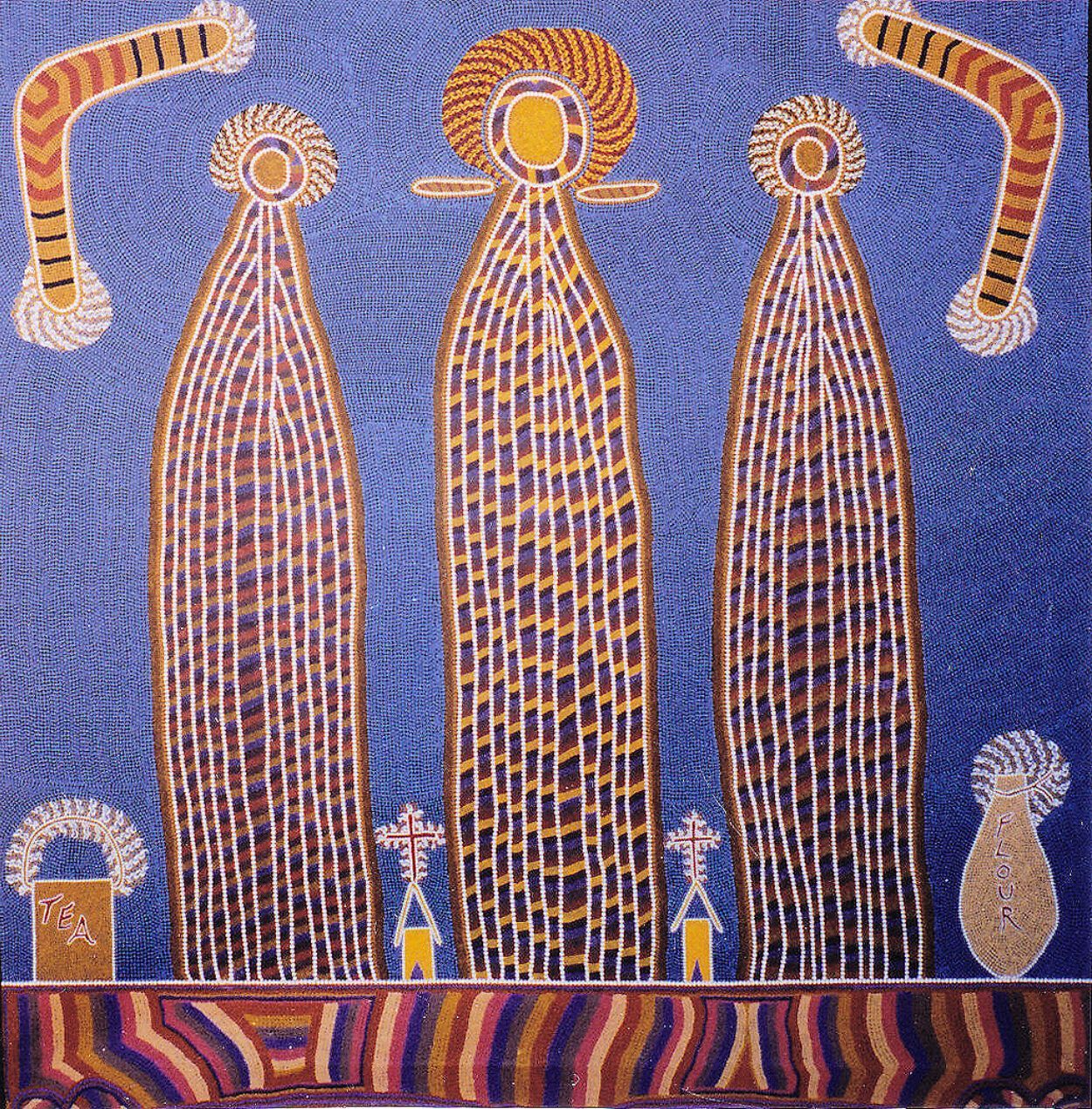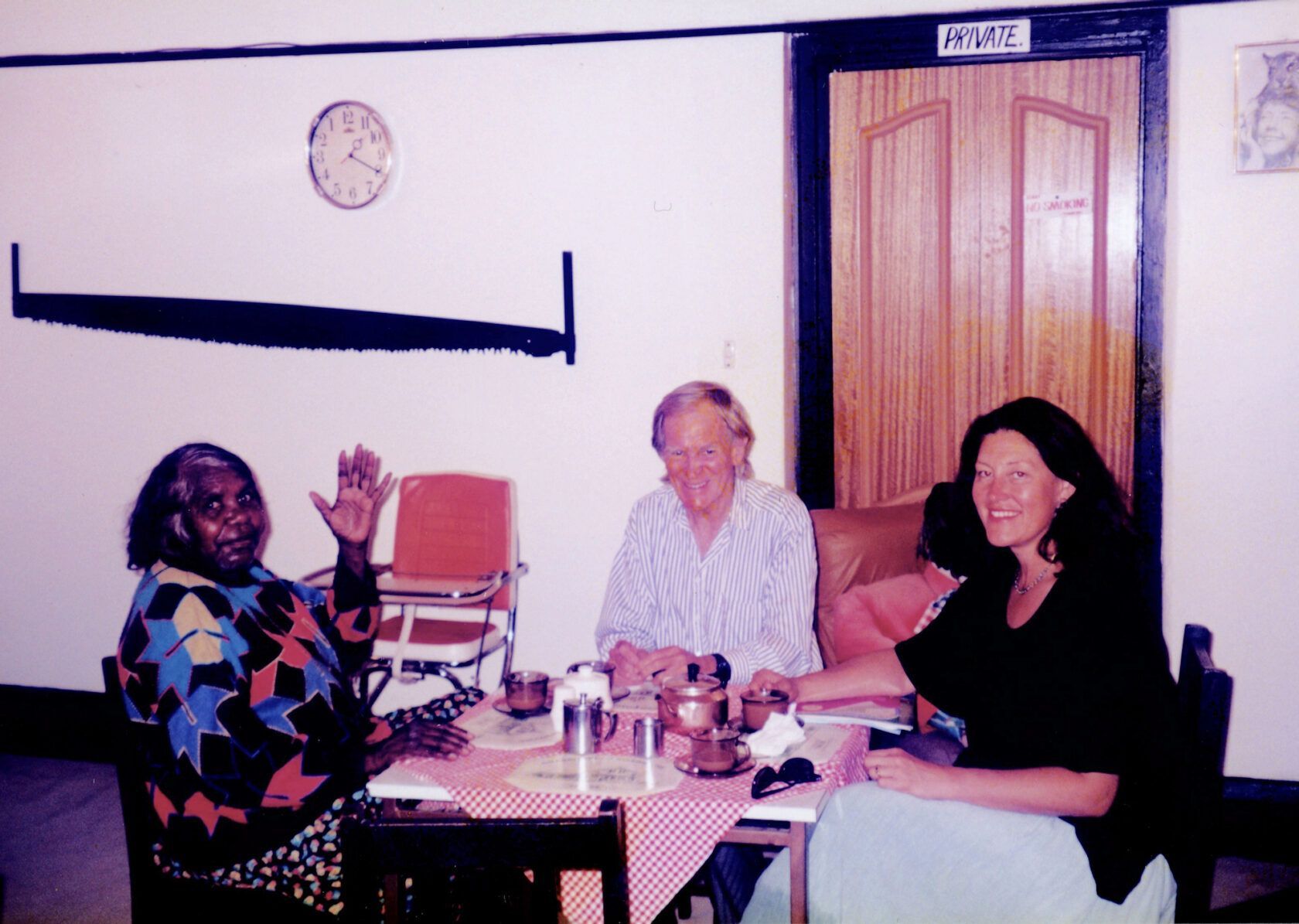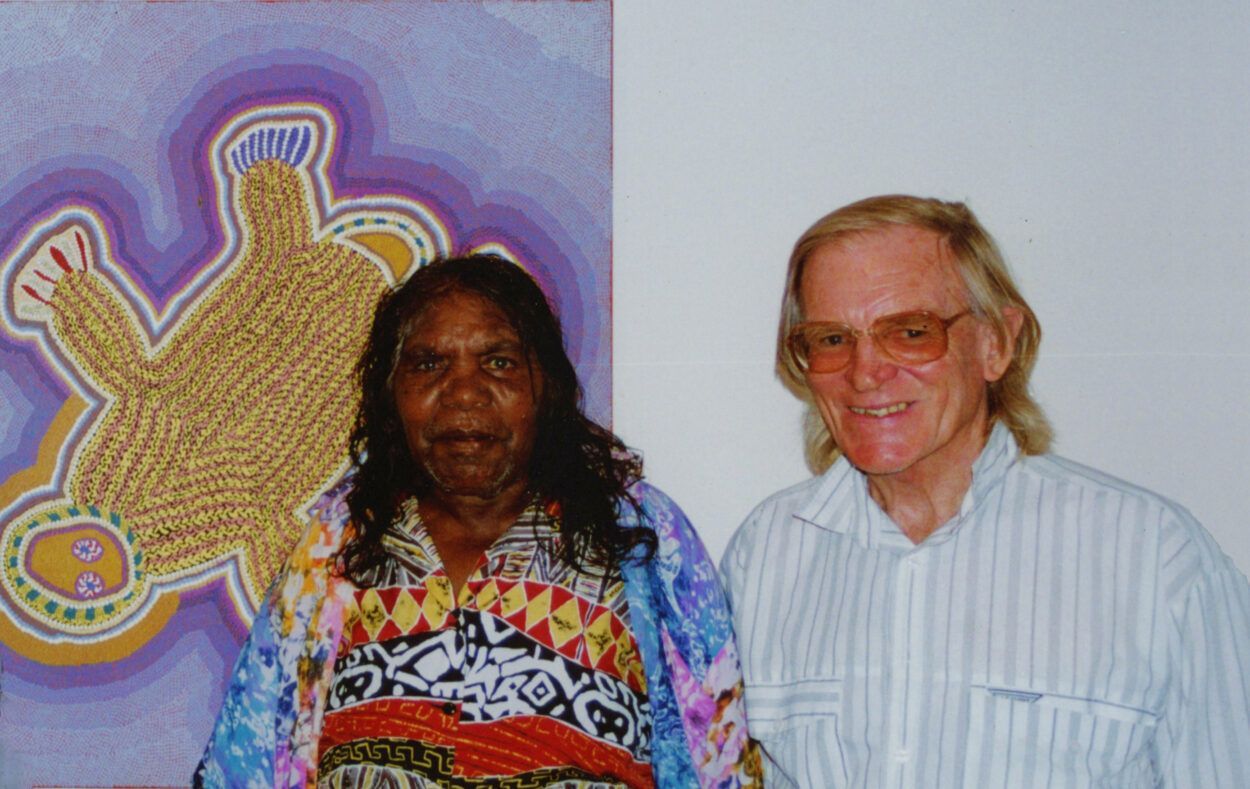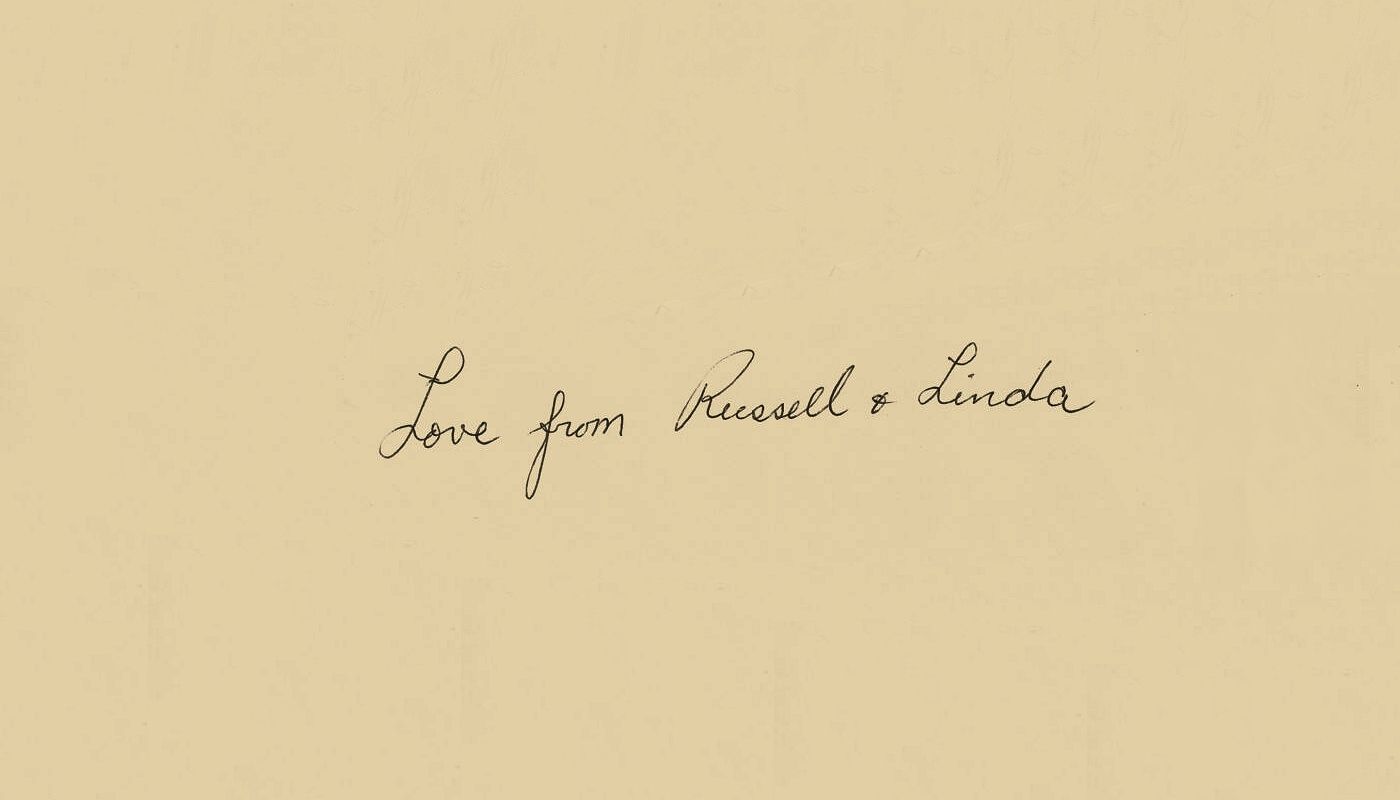Linda Syddick Napaltjarri
A strong talent to emerge from the powerful women’s art movement of the mid 80’s is Linda Syddick Napaltjarri. Innovative and distinctive, Linda’s paintings are intensely original and an excellent example of religious syncretism. Fusing stories of Christianity and Aboriginal tradition, Linda attempts to show the link between Christian beliefs and the Aboriginal view of creation known as the Dreaming, a spiritual concept which incorporates past, present and future into a dynamic continuum.
What greatly distinguishes Linda’s art is her willingness to confront contemporary issues such as money and alcohol. Being secure in her position as a senior Pintupi woman, her power lies in being able to bridge a gap between two worlds. Although until very recently most of Linda’s works were strictly traditional Pintupi style paintings of great beauty and significance she has placed herself in the vanguard of Aboriginal artists by touching upon global and universal themes in her work.
Linda was born about 1937 around Lake Mackay in the Gibson Desert, of the ‘Western Desert’ region, near the border of Western Australian and Northern Territory. Her father was killed when she was young, and her mother later re-married Shorty Lungkarta Tjungarrayi, an artist whose work was a significant influence on her when she started painting.
Tjangika (Linda Syddick) Napaltjarri, also known as Linda (Russell) Syddick Napaltjarri and Tjungkiya Wukula Napaltjarri, lived a traditional nomadic lifestyle as a child. Walking the Pintupi homelands, she developed an intimate knowledge of her country. Like many of the families from the desert region during the 1940s, they walked to the settlements on the eastern edge of the desert. There they made first contact with missions and government ration stations that were far from their ancestral lands.
The small nomadic clan that first came to the settlement at Mt Liebig in 1945 had with them a Nangkari (witch doctor), who on seeing a windmill took it to be an evil spirit and attacked it with his magic. Linda’s second father, Shorty Lungkarta was also a powerful man, the owner of many Dreaming stories, and was also a Magic man who could communicate with the spirit world. Unlike the others, he had some knowledge of the whitefella world, having worked with the army during the War. He had seen a windmill and knew their purpose. Shorty explained: “This is a whitefella thing, used for getting water up from under the ground. See that pond over there, that is good water for us to drink.”
In 1985, just before Shorty Lungkarta died, he told Linda that she was to carry on his work and to continue to paint his Tjukurrpa or Dreamings. So in 1986, Linda Syddick Napaltjarri was taught to paint by her two uncles Uta Uta Tjangala and Nosepeg Tjupurrula, both of whom were significant figures in the Papunya Desert Art Movement.
Linda Syddick Napaltjarri - Ancestral Spirit Near Lake Mackay - 46 x 56 cm - Cat 2621LSN
Ancestral Spirit Near Lake Mackay by Linda Syddick
Linda regularly paints Dreaming stories related to the Tingari and the Emu Men. The Emu Men were Creation Ancestors who travelled the country during the Tingari or Dreaming era. The Emu was the totem of her father, Rintje Tjungurrayi and stepfather, Shorty Lungkata Tjungurrayi. The Tingari were ancestral spirits beings, who went on very long journeys, creating much of the desert landscape in Central Australia, and instructing the people about law and custom. Many paintings represented topographical maps where major Tingari events occurred – significant metaphysical stories combined with the artist’s own ever-present memories of life in the Gibson Desert. Linda often incorporates many perspectives and stories into a single painting.
Linda tells of her fear at the first sight of a visiting black-cloaked missionary, yet she has since embraced Christianity alongside the Dreaming. Her works, such as A Nest of Crosses, Gladly Borne for the Mary Mackillop: a tribute exhibition, From Appreciation to Appropriation at the Flinders University Art Museum City Gallery, The Eucharist at the Flinders University Art Museum exhibition, and Holy Holy Holy, all dealt with Christian imagery and themes, combined with traditional indigenous painting techniques and motifs.
In 1990, Linda saw her work Ngkarte Dreaming hung in the Blake Prize exhibition. 1991 she had her works hung and exhibited in Gallery Gondwana in Alice Springs. Just as the Dreaming connects all of life, Linda herself incorporates contemporary events into the Dreaming. Everything is interconnected and related. For her that spirit beings come to earth and contribute to great events and then leave their mark, is quite logical and fits into what she believes to be real. This therefore explains her series of paintings, influenced by the movie ET. Linda is fascinated by this movie, having seen it over 20 times. ET longing to return home, home sparked her empathy. Linda understands that spirit beings return home after a period on earth. To her ET is a fellow spirit being.
The powerful imagery in Linda’s paintings demand attention and are often challenging and inquiring. Linda’s sense of composition and colour are also extraordinary and yet her education has come through intense observation of country rather than that of a formal art school. It was in assisting her stepfather, Shorty Lungkarta Tjungarrayi, who was to become one of the forefathers of the contemporary art movement that Linda first learned to paint. Paintings of his have been purchased through the Art Foundation of Victoria and were featured in Mythscapes exhibition (see book by Judith Ryan). The American anthropologist Fred Myers follows Shorty’s life in his book “Pintupi land, Pintupi self”.
Linda’s work is represented in public and private collections throughout Australia, USA and Europe. Clearly her status is that of a contemporary artist, transcending the narrow realm of purely ethnographic art.
Click
here to view
Linda Syddick CV





